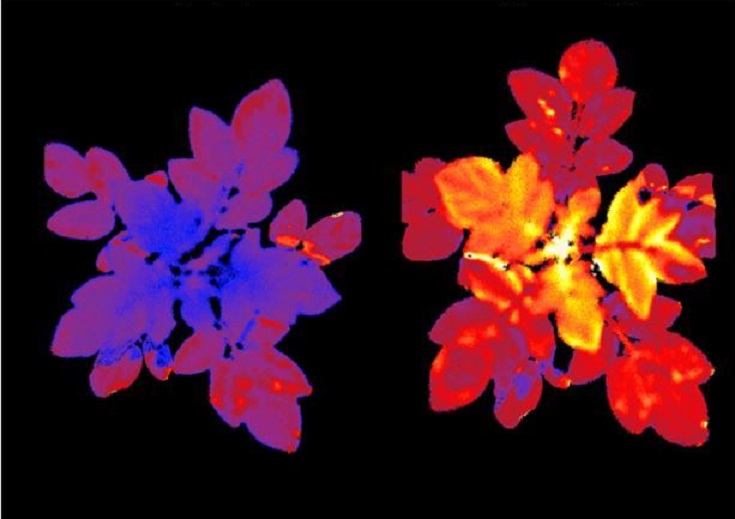A team of researchers at the Hebrew University of Jerusalem has managed to genetically modify potato plants to glow under fluorescent cameras when stressed by various factors.
One of the biggest challenges of modern agriculture is reacting to stress factors before it’s too late. Plants don’t really have a way of conveying how they feel, and, more often than not, by the time visible symptoms appear, it’s already too late to do anything about it. But scientists are hoping to fix this big problem with the help of advanced genetic manipulation. A team of Israeli researchers led by Dr. Shilo Rosenwaser managed to genetically modify a potato plant so that it glows under fluorescent camera when affected by physical stress (lack of water, cold weather, lack of sunlight, strong light etc.).

Photo: © Shilo Rosenwasser, Hebrew University
Researchers achieved the incredible feat by introducing a new gene into the plant’s chloroplasts, subcellular structures that conduct photosynthesis. This gene expresses a fluorescent protein in response to the presence of reactive oxygen species – highly reactive chemical molecules that are produced in order to help mitigate stress. The more stress that a plant experiences, the more reactive oxygen species it produces, the brighter its fluorescent glow.
It’s important to note that the fluorescence of the modified plant is invisible to the naked eye, but the change can be observed when the plant is seen through a highly sensitive fluorescent camera.
“We were able to monitor the fluorescence signals emitted from the biosensors and noticed the accumulation of reactive oxygen species during the early phase responses to stress conditions such as drought, extreme temperature, and high light,” Dr. Rosenwaser told Alpha Galileo.
The researchers chose to focus on the humble potato for their study, as it is a major food crop that comprises 40% of Israel’s exports and is very popular worldwide. However, they believe the application of biosensors can be expanded to other key crops as well, which could help mitigate the problem of crop failures due to climate change.
Last year, MIT researchers showcased a bioluminescent watercress plant created by inserting DNA obtained from bioluminescent mushrooms into the DNA sequence of the plant.












